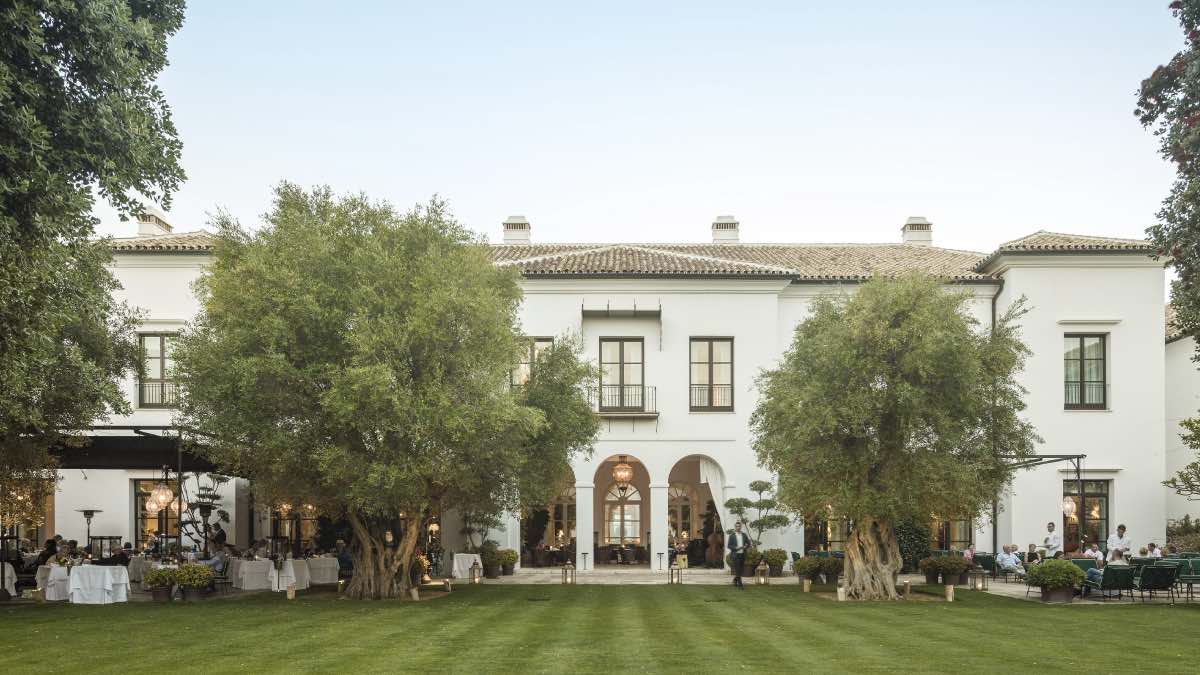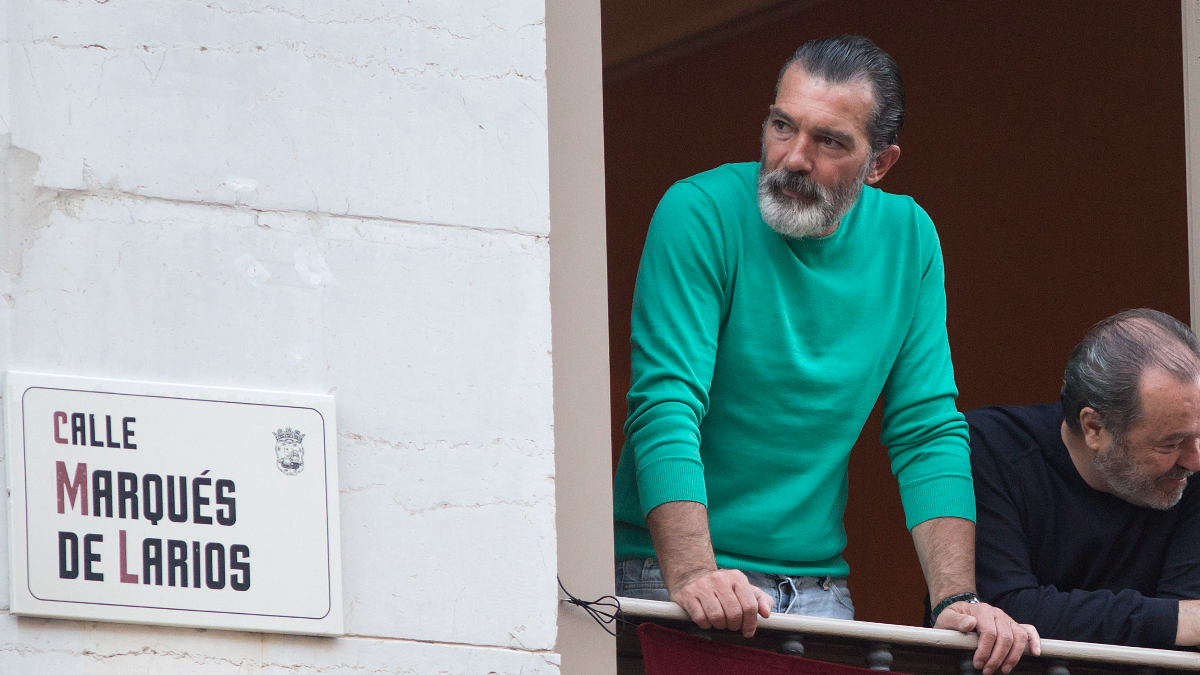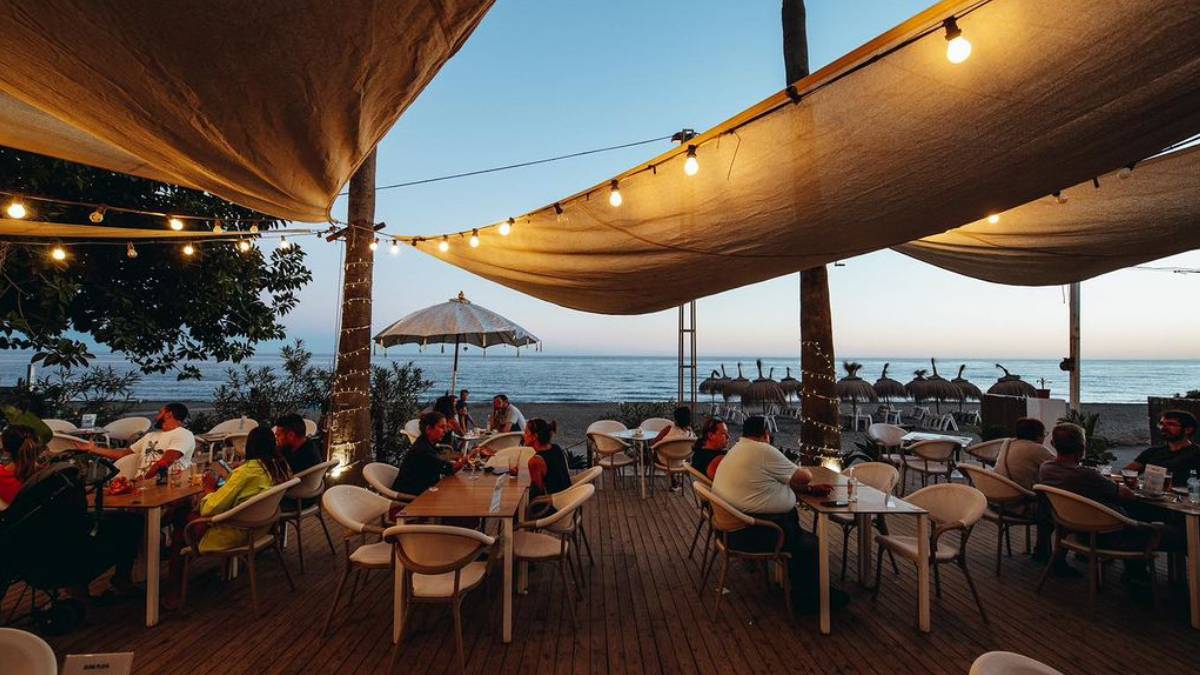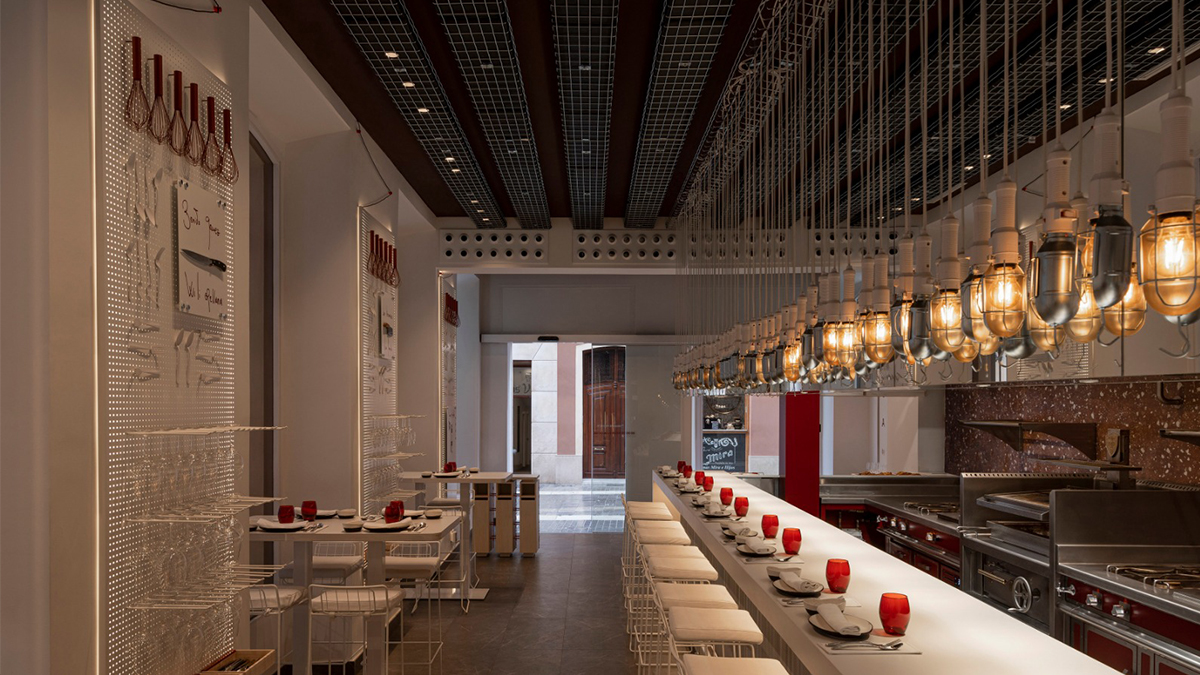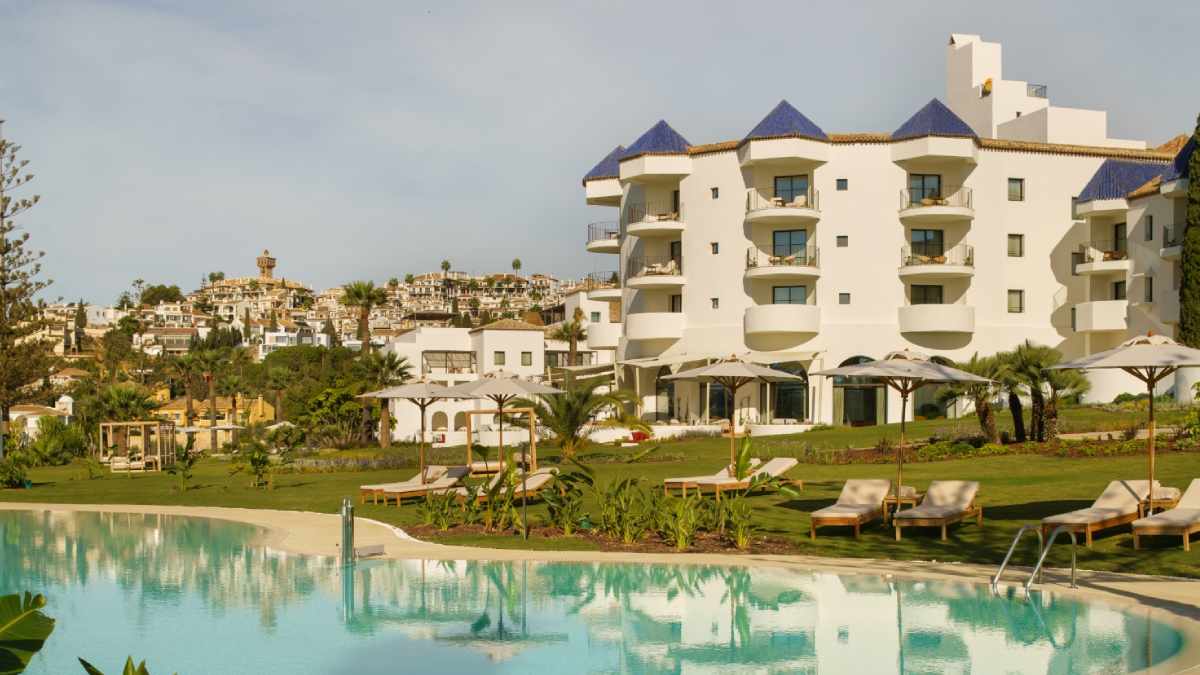Click here to read the Spanish version.
A winding road that turns its back to the sea – not to be feared because it does so in order to then face it head on – leads to Finca Cortesin (Casares, Malaga). On arrival you enter a large Andalusian courtyard with its fountain, cobblestones and creepers. Inside, the four-metre high ceilings and the furniture recovered from old palaces or convents are impressive, giving the space an instant feeling of cosiness. One could talk at length about the 67 suites, the four long swimming pools, the 2,200 m² spa, which even has a snow cabin, the 18-hole golf course and the beach club. But no, because there are few things as pleasurable as satisfying that gourmand appetite that permeates the DNA, and in this fortress of luxury and good taste they know how to make all those who determine the quality of a hotel by the quality of its restaurants very happy. For this reason, it is a must to dive into its high-level gastronomic offer that starts from the local and closest to the hotel, to mix with the best of Central Europe, Italy and Japan.
Iron and tiles
Jasmine, wisteria and roses, which are in bloom at this time of year, mark the way to El Jardín de Lutz, where Lutz Bösing officiates. And who is he? He is a talented chef from Aachen, a German city very close to Belgium and the Netherlands, who arrived in Spain more than 30 years ago and never left. He first stopped at emblematic places such as the La Gavina hostel (S’Agaró, Girona) or the La Bobadilla hotel (Loja, Granada) to finally end up in this corner sheltered by the Casares mountains. Far from the limelight and the lists, he has become a cult chef that those who know him fall in love with and follow him wherever he is.
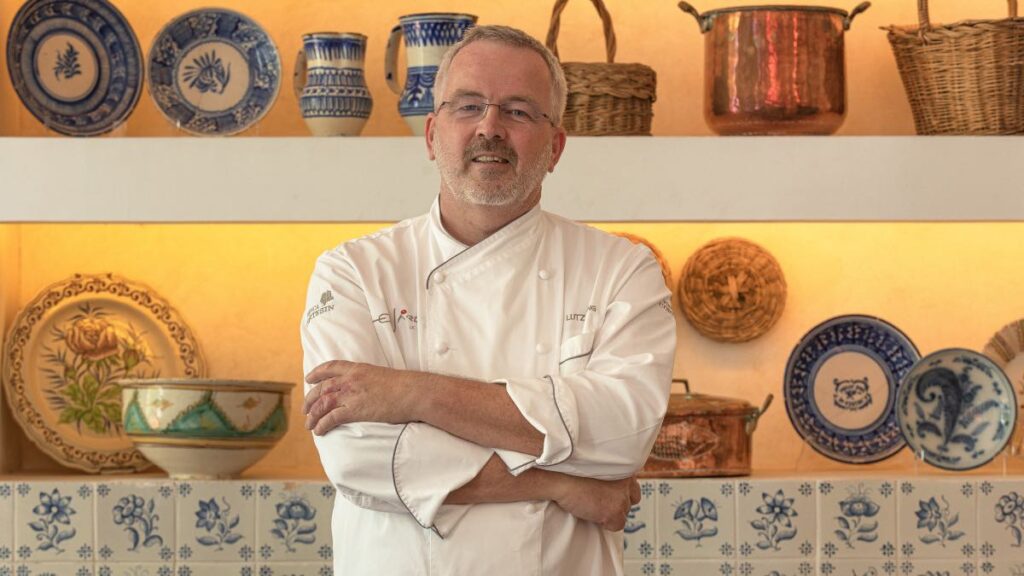
Its style cannot be found anywhere else, with that Central European touch and all its classicism, those sweet and sour nuances and the use of bitter vegetables that are so much in vogue up there. A touch that, in this case, is mixed with local products and flavours. A clear example of this is the garlic lobster with fried egg and potatoes, to which the frozen oyster is grated to give it an umami touch, or the sour fish and seafood soup with lime leaves. The carnivorous world is his own, and he proves it with guinea fowl breast with morel sauce, bimi and mashed potatoes, beef sirloin chateaubriand with Béarnaise sauce, or Königsberger Klopse, white veal meatballs with caper sauce.
As the year progresses and the warmer months arrive, the terrace, sheltered by centenary olive trees, welcomes more and more diners who prefer to dine outside while watching the sun set on the horizon. Sometimes a brass band is even planted in the garden to add to the romance of the moment. Although the exterior has a lot of charm, the interior is full of personality, with a dining room that is a reflection of what the Lutz Garden is all about: Dutch iron lamps that coexist with Andalusian tiles and ceramics. A mixture of elements and styles that are Bösing’s own and that fit together perfectly, effortlessly and without juggling.
The REI of sushi
The same main courtyard from which you enter the Lutz Garden also leads to REI, the home of Asian and Mediterranean culture – can there be a better combination? -. A very large room opens up that reminds us that luxury is also space and, in the background, we can see the entrance and part of the kitchen run by Luis Olarra. The Bilbao native (he learned with Fernando Canales and Martín Berasategui) controls the environment because he was already at the controls of the previous restaurant located here, Kabuki Raw under the signature of Ricardo Sanz. But this place is, since last year, another one; it is REI and it is his. “Confucius said that if you serve nature, it will serve you, a maxim that diners will see faithfully reflected at REI,” says Luis. And he proves it with top-notch fish and seafood, as well as organic produce from his own garden that tastes best in tempura.
Tartares here are serious business, such as the one with wild bluefin tuna belly with wasabi, ginger, paprika de la vera, soufflé rice, spring onion and sisho; or, in a more purist version, with spring onion and free-range egg. The selection of nigiris is made by the chef, but it is best to make sure that the sea bass tataki with a smoked sauce based on sea bass bone, wakame seaweed and grilled spring onion is included, because it is a must.
The Japanese-Mediterranean touch can also be felt in the sirloin steak with gremolata sauce, ponzu and Japanese mustard, in the shrimp omelette or in the oyster with smoked avocado and lime zest.
Delicious stravaganza
Better leave some room and an appetite because there is still the final show, which arrives with a headscarf and a great desire to have fun. Andrea Tumbarello, the king of truffles and exuberance, presents himself alone. For 18 years he has been running the Don Giovanni restaurant in Madrid, located between the Retiro and Pacífico districts. But he decided that the province of Malaga could not miss out on the essence of true Italian cuisine and decided to accompany the opening of Finca Cortesin in 2009 with the opening of a branch of Don Giovanni.
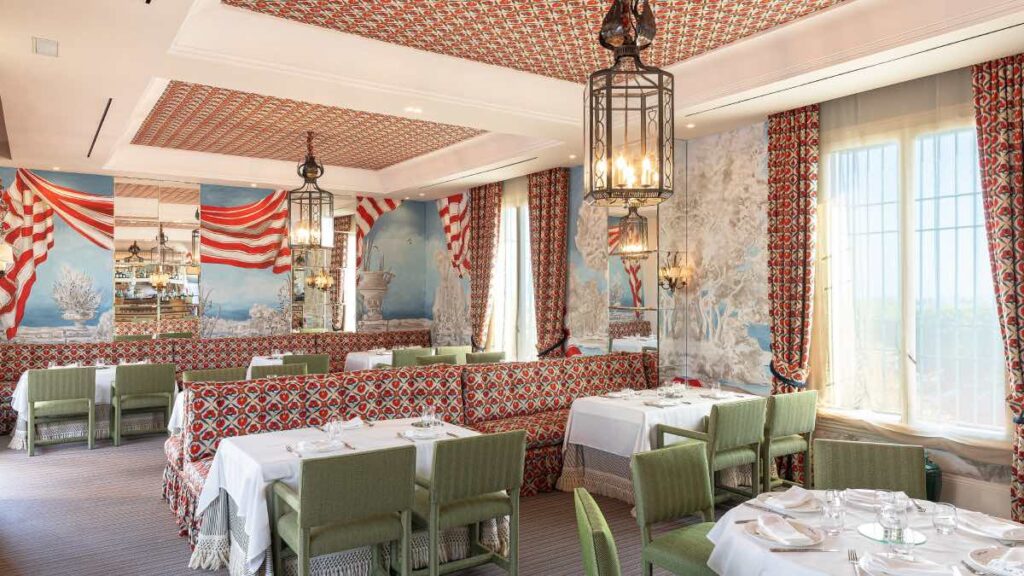
As the king of the truffle, he gleefully grates it over spaghetti alla bosconara (with boletus), champagne risotto with truffle butter, or the now legendary Millesime egg with truffle caviar and boletus cream. But there is another kingdom that also belongs to him, that of carbonara, which ends in front of the diner with a lot of grace, a gigantic pepper shaker and a leaf of parsley in the purest Arguiñano style. And of course, there are also carpaccios, pizzas and -wink, wink- a fried squash blossom stuffed with mozzarella that is a real delight.
Although it’s hard to say goodbye to a place like this, there’s always the Blue Bar of the hotel, where you can drink every last drop of cocktail, digest it all and continue savouring a long spring night that took place between the sea and the mountains.

